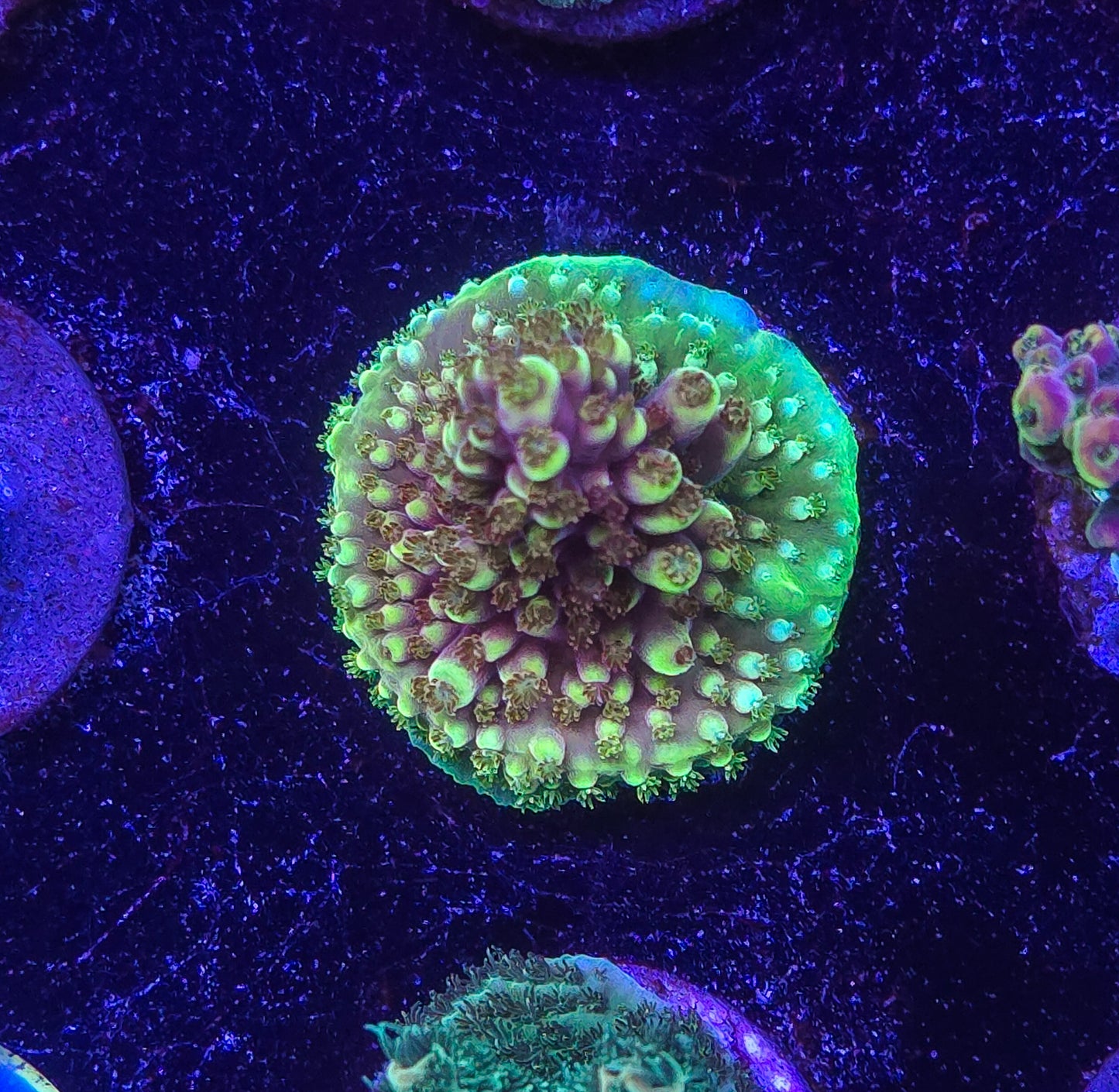
Description
Review
FAQ
Acropora coral are small polyp stony (SPS) coral belonging to the Acroporidae family. There are almost 150 varieties and they come in various forms, including plating and branching. Acropora are considered difficult coral to keep as they require the right tank conditions and that those conditions remain stable to do well.
Acropora coral need high light levels in the range of about 250 – 600 par. But, like many corals, too much light is not a good thing. Corals need to acclimate if you want to move the light intensity higher. So, start a bit lower and slowly work up until the coral seems happy and is doing well.
Acropora are peaceful corals but giving them a couple of inches of space is still a good idea.
Acropora get most of their food from their symbiotic relationship with the zooanthellae in their tissue. The addition of amino acids seems to aid growth and color.
Water flow should be moderate and indirect for Acropora, ideally with an alternating flow pattern. Too much flow, especially if direct flow, can damage the coral’s tissue and limit its ability to feed.
Water Chemistry: PH 8.0 – 8.4m Nitrates 5 – 10, Phosphates 0.05m – 0.1, Alkalinity 8 - 9 dKh, and Calcium 400 – 450.
This is a representative picture of the piece of coral you will receive not the exact piece of coral you will receive (almost WYSIWYG).
Description
Acropora coral are small polyp stony (SPS) coral belonging to the Acroporidae family. There are almost 150 varieties and they come in various forms, including plating and branching. Acropora are considered difficult coral to keep as they require the right tank conditions and that those conditions remain stable to do well.
Acropora coral need high light levels in the range of about 250 – 600 par. But, like many corals, too much light is not a good thing. Corals need to acclimate if you want to move the light intensity higher. So, start a bit lower and slowly work up until the coral seems happy and is doing well.
Acropora are peaceful corals but giving them a couple of inches of space is still a good idea.
Acropora get most of their food from their symbiotic relationship with the zooanthellae in their tissue. The addition of amino acids seems to aid growth and color.
Water flow should be moderate and indirect for Acropora, ideally with an alternating flow pattern. Too much flow, especially if direct flow, can damage the coral’s tissue and limit its ability to feed.
Water Chemistry: PH 8.0 – 8.4m Nitrates 5 – 10, Phosphates 0.05m – 0.1, Alkalinity 8 - 9 dKh, and Calcium 400 – 450.
This is a representative picture of the piece of coral you will receive not the exact piece of coral you will receive (almost WYSIWYG).
Review
FAQ

